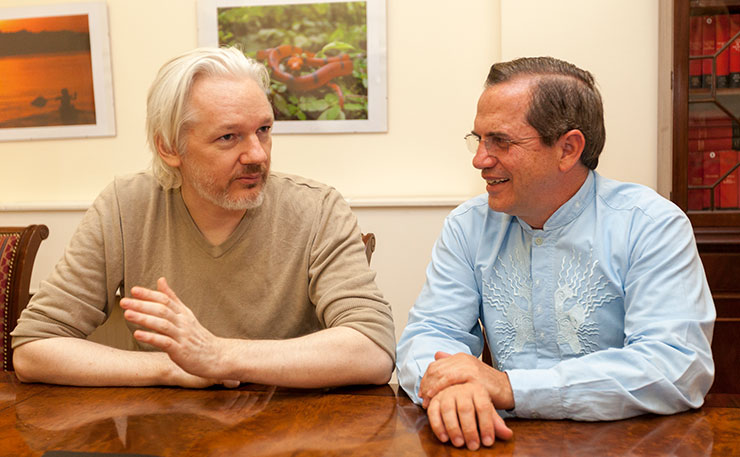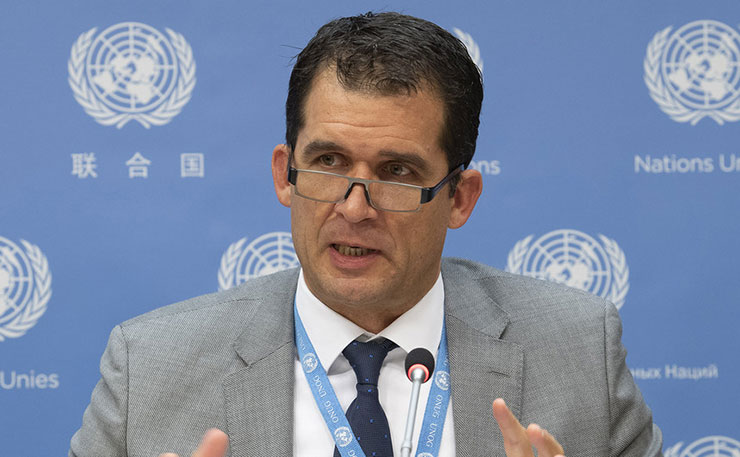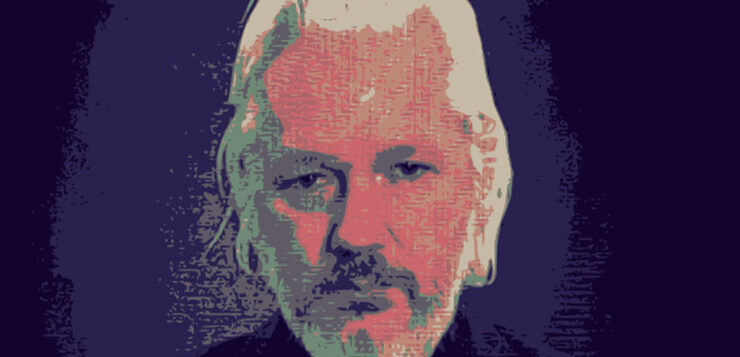‘The truth will out’, or so the saying goes. The question is, at least in a modern context, is how much injury – moral and otherwise – is suffered by the courageous men and women trying to expose it? Trauma therapist and researcher Kari James explores that answer.
12th July 2007: Two US Apache helicopters unleash 30mm cannon fire on a group of Iraqi civilians. Two of them are Reuters journalists – Namir Noor-Eldeen and Saeed Chmagh.
Twelve are killed, including both journalists and a passing van driver who stops to help the wounded. The van driver’s two young children, passengers at the time, are severely wounded.
The journalists’ cameras were later retrieved from the soldiers who had seized them. They indicated no evidence of the firefight the US military claimed had prompted the strike.
5th April 2010: WikiLeaks releases a video titled Collateral Murder, confirmed as authentic by the US military. The grainy footage taken from one of the Apaches documents the casual slaughter of noncombatants. You can hear the crew laughing at some of the casualties.
Is this just part and parcel of war? Is it sanctioned by the brass, or just the actions of a few bad apples, like the 2005 Abu Ghraib prisoner abuse scandal that had previously embarrassed the US military?
The troops involved in the Collateral Murder atrocity were well aware of the rules of engagement, and that they were in violation. Yet a US military investigation cleared them of any wrongdoing, though they were unable to locate their own copy of the footage.
Stories that make or break
In service of public interest reporting, journalists worldwide may routinely witness traumatic events like the Collateral Murder atrocity.
While that’s no picnic, it’s the outcome of a story that makes or breaks the journalist.
In some cases, the story never sees the light of day, spiked by an editor who doesn’t see the value in it.
In other cases, the story is published, people read it and think ‘oh, how awful’, and then nothing changes. The same atrocities continue.
And in other cases, the story is published, the public react to it, and the world comes perilously close to making much-needed changes. Vested interests may then come into play, seeking to make scapegoats and examples of those who dare to incite change.

That’s how people like Jamal Khashoggi, Shireen Abu Akleh, and the Balibo Five wind up on the cutting room floor. And that’s how WikiLeaks founder Julian Assange wound up behind maximum security bars in Belmarsh.
A timeline of persecution
25th June 2024: Julian Assange is released from prison, a guilty plea of espionage extorted from him in exchange for his freedom.
It’s an interesting conclusion to a saga that began with two Swedish sexual assault investigations* in 2010, just a few months after the release of Collateral Murder.
After losing his appeal against the European arrest warrant issued against him, in 2012 Assange skipped bail. He was granted asylum by the government of Ecuador on grounds of political persecution and fears of extradition to the US. Not a commonplace concern in European sexual assault cases concerning a non-US citizen. But not many subjects of sexual assault allegations are simultaneously the subjects of CIA kidnapping and assassination plots.
So, Assange hid out in the Ecuadorian embassy in London for the next seven years, during which time the Swedish sexual assault investigations were dropped.
Assange’s asylum was withdrawn in April 2019. Coincidentally, one of the Swedish sexual assault investigations was briefly re-instigated in May before being dropped again in November.

The reason given? “The evidence has weakened considerably due to the long period of time that has elapsed since the events in question.”
Apparently, that didn’t matter. The UK and US colluded to extradite Assange to the US because, in a roundabout case of extreme serendipity, he was wanted there for espionage.
Perhaps the distinction between journalism and espionage is fuzzy.
In April 2019, British police were invited into the embassy, and Assange was arrested, found guilty of breaching bail on those null-and-void charges, and sentenced to 50 weeks in prison. In May 2019, the US filed espionage charges.
So, those 50 weeks dragged on for just over five years, as Assange’s status evolved from a serving prisoner to a person facing extradition.
Post-plea bargain, he now gets to pick up the pieces.
Moral betrayal and moral injury
What might the picking up of pieces look like for a freshly released political prisoner? Well, it depends on the status of their mental health. And political persecution is not known to go gentle on the mental health.
Upon visiting Assange in prison, Nils Melzer, UN special rapporteur on Torture and Other Cruel, Inhuman or Degrading Treatment or Punishment, concluded that he presented with symptoms typical of prolonged exposure to psychological torture.
Assange has had many loyal and courageous supporters over the last decade and a half. But few politicians and journalists were among them. Many aided and abetted Assange’s persecution with casual character assassination, as though a pile-on were in the public interest.

The treatment of Assange has a label: moral betrayal.
Moral betrayal involves witnessing or experiencing persecution, gross injustice, or systemic failure; or being let down by legitimate authorities, colleagues, or the public when it really counts.
Moral betrayal is one of a handful of established causes of moral injury, a traumatic stress injury that shares some features with PTSD and depression, though with some important distinctions.
The morally injured suffer intrusive memories of their experience and intense feelings of horror, anger, guilt, and shame. They become demoralized and socially alienated. They may become preoccupied with justice. And their trust horizon shrinks, often to just a handful of people who had their back through their ordeal.
All too often, moral injury ends in suicide.
I don’t know if Julian Assange is morally injured; I haven’t had the opportunity to assess him. But exposure to high-stakes situations that challenge one’s values, expectations, and social norms are potentially morally injurious. And such situations are a journalist’s bread and butter.
Occupational hazard?
Like first responders, journalists are frequently, and often repeatedly, exposed to trauma and moral challenge, whether reporting on natural disasters, violent crime, war, or human rights abuses.
Unlike first responders, journalists are neither expected nor equipped to intervene or assist.
They bear witness to extreme violence, cruelty, abuse, and tragedy. And yet they are unable to protect people from the very events they must report on.

Sometimes, in the line of reporting duty, a journalist may accidentally cause harm. Perhaps by encouraging disclosures from vulnerable individuals. Perhaps by inadvertently endangering a source, like Chelsea Manning, the former US soldier who was court-martialled and incarcerated for seven years following her transfer of hundreds of thousands of classified documents to WikiLeaks, including the Collateral Murder footage.
Witnessing suffering and inflicting accidental harm are thought of as moral transgressions, as they conflict with the individual’s values or ethics. Like moral betrayal, they can result in moral injury.
Compounding this, journalists are subject to public scrutiny for the decisions they make when they do their job of reporting in lieu of offering help. And it may appear to the public that the journalist is impervious to the suffering of others.
Yet journalists often empathize greatly with the subjects of their stories, which makes it hard for them to detach from their work.
Suffering for their work isn’t just psychological. There are also physical risks, particularly when reporting from a warzone.
By far the biggest of these warzone risks is assassination, not crossfire or landmines. Almost 75% of journalists killed in war are deliberately targeted.
Indeed, 2007, the year of Collateral Murder, was the second most dangerous year on record to be a journalist, with 135 journalists murdered. Nearly 50% of these were in Iraq.
The most dangerous year was 2006, with 155 journalists murdered, 43% of them in Iraq.
The killing of journalists was rare in Iraq before the 2003 Anglo-American invasion. It costs a lot to keep a secret.
So, when a story fails to result in justice or policy change, a journalist may question why they put themselves, or others, on the line.
A chilling effect?
It’s now widely speculated that Assange’s plea bargain will have a chilling effect on future reporting on the moral and ethical transgressions of the world’s governing authorities and their enforcers.
It seems prior chilling events may have tumbled down the memory hole.
Yes, while the plea bargain sets a precedent for the criminalization of public interest journalism, extrajudicial guarantees against public interest journalism have long been in place.

Just ask the Saudis, who butchered regime critic, Jamal Khashoggi, in the Saudi embassy in Turkey in 2018.
Or the Israeli Defence Forces, who gunned down Shireen Abu Akleh as she covered their raid in the Jenin refugee camp in 2022, wearing a press vest, no less.
Or the Indonesian special forces, who murdered five journalists – Greg Shackleton, Tony Stewart, Gary Cunningham, Brian Peters, and Malcolm Rennie – in 1975 for their coverage of the lead-up to Indonesia’s invasion of East Timor, and who subsequently executed Australian Journalist Roger East by firing squad after he attempted to investigate the murders.
The Australian government has not wanted to compromise its relationship with the Indonesian government by holding them to account.
Yet unperturbed by the moral injuries of witnessing and betrayal, imprisonment, and even death, journalists worldwide continue to exercise moral courage.
Moral courage involves acting in service of one’s convictions despite the risk of adverse consequences. While it is frightening to do so, history abounds with examples of heroes who served the masters of truth and justice above their fears of retribution.
Julian Assange and Chelsea Manning are two such examples. Both certainly knew the potential consequences of their actions.
Assange’s story is a special one, but not a particularly exceptional one, save for the fact that he was not assassinated as so many others have been.
And while his extorted plea bargain is tantamount to the criminalisation of journalism, the cat is already out of the bag.
Truth finds a way to get told.
ED’S NOTE: Journalists seeking trauma-related resources could worse than the Dart Centre for Journalism and Trauma.
* CLARIFICATION: This article originally referred to ‘sexual assault charges’, however this has been changed to ‘sexual assault investigations’ to reflect the reality that Mr Assange was never formally charged in relation to the alleged assaults in Sweden – Ed.
Donate To New Matilda
New Matilda is a small, independent media outlet. We survive through reader contributions, and never losing a lawsuit. If you got something from this article, giving something back helps us to continue speaking truth to power. Every little bit counts.




